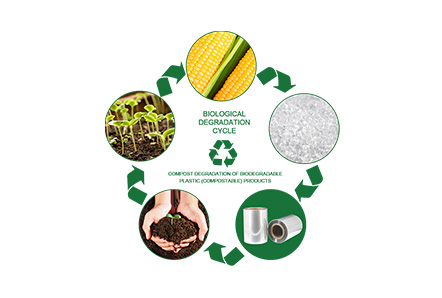Poly lactic acid (PLA) is kind of biodegradable thermoplastic derived from renewable sources including corn starch (majorly in U.S & Canada), cassava roots, chips, starch (in Asia) or even from sugarcane (in the rest of the world).
PLA material is different from the commonly available form of thermoplastic polymer materials. It is primarily derived from renewable resources like corn starch or sugar cane.
Mostly plastics are derived through a common process termed as polymerization utilizing the non-renewable sources of energy. However, PLA plastic is a form of bioplastic derived from biomass.
It is a kind of biodegradable plastic with the characteristics similar to all other polymers such as Polypropylene (PP), Polyethylene terephthalate or Acrylonitrile Butadiene Styrene (ABS)
Poly lactic acid is applicable for a variety of uses including the production of plastic films, plastic bottles and medical devices (biodegradable in nature). It is even used 3D printing along with producing objects to hold hot liquids (e.g. cups).
There are many types of polylactic acid available including Racemic PLLA (Poly-L-lactic Acid), Regular PLLA (Poly-L-lactic Acid), PDLA (Poly-D-lactic Acid), and PDLLA (Poly-DL-lactic Acid).
Each of them is slightly different in their characteristics but are produced in a similar way from renewable sources (lactic acid).
PLA was first discovered by Wallace Carothers (who also invented nylon) in 1920. He was aiming to produce an environmentally-friendly plastic for DuPont. In initial days the commercial use of PLA material was very costly.
Further, in 1989 Dr. Patrick R. Gruber along with his wife Sally, discovered the process of producing this material by corn on his stove at home, which reduced the manufacturing cost.
Nowadays this is the most commonly used environment-friendly thermoplastic at the global level.
This material is produced by usage of two basic monomers which are lactic acid and lactide (cyclic de-ester). Two different processes are involved in producing PLA are condensation and polymerization.
The most commonly used process is polymerization process. It is termed as ring-opening polymerization of lactide with various metal catalysts (tin octane) in solution, melt form or even as suspension. This process results in metal catalyst combining with lactide to form larger pla molecules.
The condensation process is very similar to the polymerization process. The principal difference in both the processes is temperature during the process and the by-products (condensates) released after the reaction.
This process is carried out at less than 200°C, as above this temperature entropically favored lactide is generated. At initial level of the process lactic acid is first oligomerized to PLA oligomers. Afterwards, poly-condensation is done in melt or solution where short oligomers combine and produce high molecular weight PLA.

PLA plastic biodegradable nature and suiting optical, physical and chemical properties prove it to be an ideal choice of material for a number of applications including dyeing for textiles, packaging, medical devices (stents & sutures) even for diapers and many others.
Basic Properties Include:
● High mechanical strength
● Low toxic level
● Good Barrier properties (moisture, heat etc.)
● High mechanical resistance
● Good and smooth appearance
● Resistant to chemicals
● UV resistant
● Low flammability & smoke formation
● PLA Density- 1.210–1.430 g·cm−3 [1]
● Melting Point- 150 to 160 °C (302 to 320 °F; 423 to 433 K)[1]
● Specific Gravity- 1.27
● Glass Transition Temperature- 55°C
● Tensile Strength- 59MPa
● Flexural Strength- 106MPa
● Elongation at break- 7.0%
● Rockwell Hardness- 88HR
Copyright © HUBEI HYF PACKAGING CO., LTD. All Rights Reserved | Sitemap
| Powered by

SEOKeywords:Shrink Wrap Film Customized Biodegradable Shrink Film Pvc Shrink Film Rolls Flexible Packaging Film Petg Shrink Film Properties Custom Printed Shrink Film High Shrink Petg Shrink Film China Pvc Shrink Wrap Film Shrink Sleeve Plastic Label Films Shrink Sleeve Packaging Pvc Shrink Film Manufacturing Process Pvc Super Clear Shrink Film Heat Shrink Film Roll Pvc Shrink Film For Bottle Label Price Shrink Wrap Uses China Shrink Film Pvc Clear Shrink Film Printable Shrink Film Plastic Shrink Film